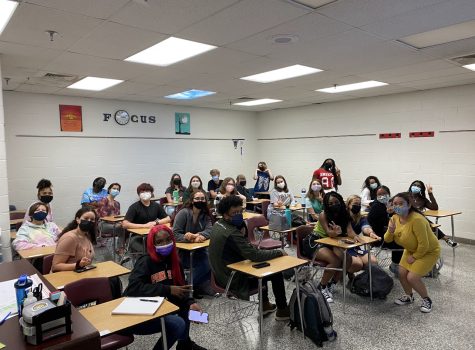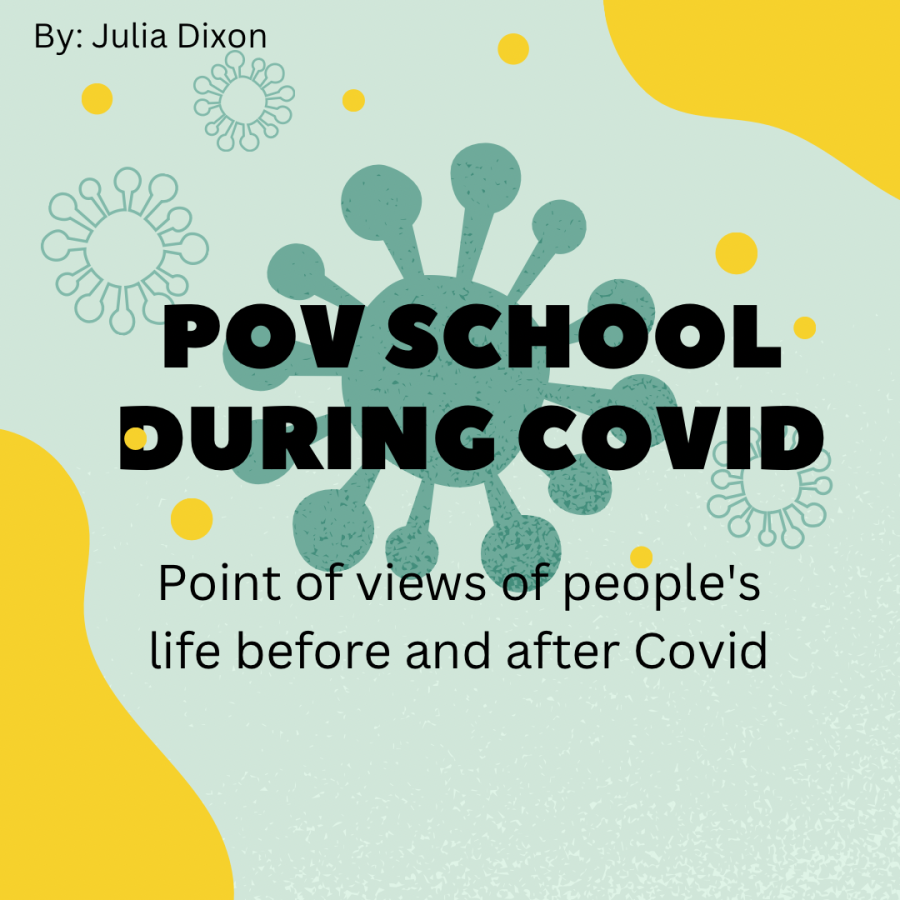The long term effects of COVID in the schools
COVID isn’t gone and neither are it’s effects
October 30, 2022
On March 13, 2020 students spilled out of the building to the buses and their cars not knowing it would be their last day in the building that school year.
Over the next two years, students and staff alternated between virtual learning, hybrid learning, and modified in person learning (masks, split lunches, social distancing). We may now be back to relative normalcy, but our experiences over the past two years have changed us.
“I feel like people are afraid to kind of get out there,” said English Teacher Robin Lusk-Stancil. “There is still that fear.”
Virtual learning not only impacted students academically, it also impacted them mentally.
According to the Kaiser Family Foundation, “one in five (22%) of parents of kids who went to school [during the pandemic] say their kids experienced mental health or behavioral problems due to Covid, but the number rose to 39% for kids whose school experience was largely through a computer screen,” which was the case for Salem students at the end of 2020 and the beginning of 2021.
Virtual learning was not the ideal platform for senior Kirra Napier. “I missed getting ready every morning,” said Napier. “I also feel like I lost social skills.”
Others thrived in the virtual environment.
“My grades were awesome,” said junior Luci Elmquist. “I had so much time to do literally anything.”
According to Unicef, “around 214 million children globally – or 1 in 7 – have missed more than three quarters of their in-person learning” due to COVID.
By 2021 we started to integrate some in person learning, but the hybrid in-person and virtual model had its downsides. Those who came in person also had to socially distance and wear masks.

“The school felt really empty when only some of us were back,” said senior Harmony Crawford. “Having teachers teach us in class and people at home on zoom at the same time was really awkward. Teachers would have to stop and fix technical problems and it was strange sitting in a classroom with like three people and everyone else on Zoom.”
Now that we have returned to relative normalcy, some of the positive changes inspired by COVID have remained. For example, teachers posting their slide shows every day in Schoology and now Canvas. The ability for students to meet with teachers virtually for help on assignments if they can’t find a time to meet in person and even clubs offering the option to zoom in to meetings if a member can’t attend in person.
Covid has caused changes and challenges for us all, but we also learned valuable lessons from it. One of the most common is to appreciate our everyday lives.
“I’m living my best life now because I understand that a world pandemic can happen and things happen in the world and we just have to be ready for everything,” said Elmquist. “I feel more comfortable being myself now.”


AreJay • Nov 1, 2022 at 7:29 pm
I’m glad that we’re moving on and making the best of our final year here, very very (very) cool article